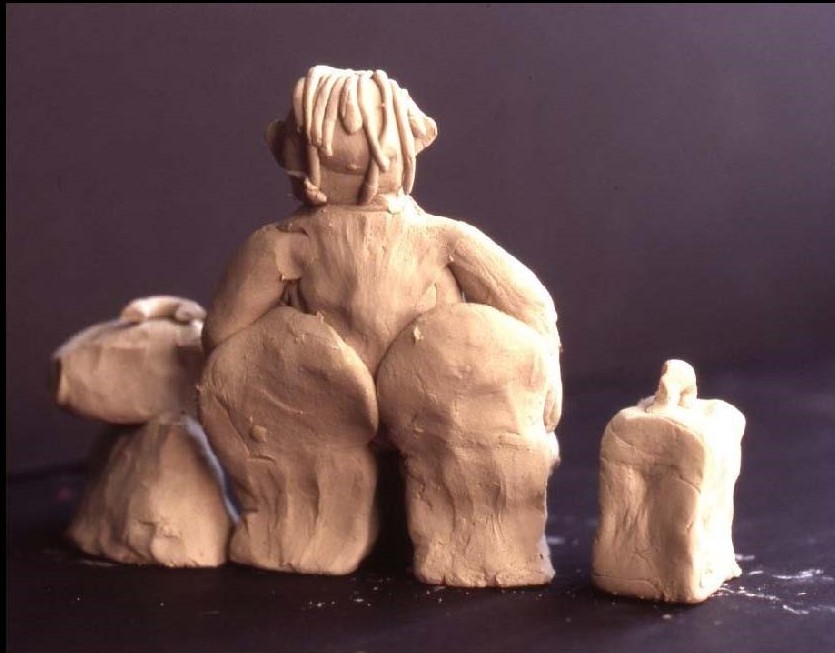By Michelle L. Dean, MA, ATR-BC, LPC, CGP | January 13, 2016 | Health Care
As the New Year unfolds, we may find ourselves inundated with messages to make resolutions, lose weight, and commence rigorous exercise programs in order to feel fit, fabulous, and most of all, loved. These ideals take hold and blossom for some because they play on underlying vulnerabilities and a need to look outside of oneself for assurances. As a result, each year countless seemingly innocent diets turn into deadly eating disorders. It is estimated that 20 million women and ten million men in the United States have an active eating disorder (Wade, Keski-Rahkonen, & Hudson, 2011) while four out of ten individuals have either personally experienced an eating disorder or know someone who has (National Eating Disorder Association, 2005).
While media messages do not cause eating disorders, they are among a host of complex contributing factors that do. Genetics are the proverbial gun that becomes loaded and the trigger is pulled by a number of other contributing factors such as biological, environmental, psychological, and cultural (Costin, 1999). The expression of an eating disorder arises out of symbolic need. Across the continuum of disordered eating, it functions as an attempt to meet those needs. Whether underlying needs are acceptance, desirability, numbness, or love, they create a potentially deadly constellation of symptoms.
The same conditions that make one vulnerable to outside images that extol an elusive solution, or quick fix to suffering, can also be tapped into to support and repair vulnerability or previous trauma by using images in a therapeutic context, such as art therapy. Unlike the externalized media images that may insidiously promote an ideal of self that is incongruent to health and erode well-being, images created in art therapy help build a sense of self and resiliency from the inside out.
Almost from the inception of specialized treatment for eating disorders in the 1970’s, eating disorder pioneer, Hilda Bruch, called for the use of a “modified psychotherapy” such as art therapy to assist patients in connecting to internal sensations, improving awareness of hunger and emotional cues, and meeting the symbolic expression of disordered eating with a treatment that addresses symbolic function (Bruch, 1973; Dean, 2008, 2013; Milia, 2000; van der Kolk, Perry, & Herman, 1991). “With an eating disorder, creative development becomes stilled, starved, and arrested. By re-engaging in a creative process, such as art therapy, there is an opportunity to amplify the emergent nature of the image that holds the symbolic content of the individual […] in a polyvalent way” (Dean, 2013, p. 283-284). In other words, the image speaks on multiple levels, which can be difficult to access through words alone. While many of my clients are well educated, articulate, and can converse about multiple subjects, making the connection between feelings and words can be difficult. This disconnect can be the result of previous trauma, defense against feelings, the result of malnutrition, as well as many other factors. Thus deficient in words to express stressors, actions are used in their place that can have dire consequences, as eating disorders are more deadly than any other psychiatric illness (Arcelus, Mitchell, Wales, & Nielsen, 2011).
- Figure 1. Front view; Michelle L. Dean, 2016. Reprinted from Using Art Media in Psychotherapy: Bringing the Power of Creativity to Practice. New York: Routledge.
- Figure 2. Back view; Michelle L. Dean, 2016. Reprinted from Using Art Media in Psychotherapy: Bringing the Power of Creativity to Practice. New York: Routledge.
In the following example, Amy*, a reserved, seventeen-year-old girl who struggled with restricting and purging, prepared to leave an eating disorders treatment facility. In her clay creation she depicted a potent representation of how multiple perspectives and greater awareness may be expressed in art. The use of art in the therapeutic context allows for complex, and at times, juxtaposed ideas to be expressed simultaneously, which can difficult to accomplish with language because words are linear. Only one word may be spoken at a time. Amy created a sculpture that represented herself and her optimism for her discharge. From the front, Figure 1, she said, “I am sitting on a bench waiting for my ride, my bags are packed, and I am ready to go!”
As we discussed her sculpture, we observed that from the back view, Figure 2, her body became the bench creating a large and distorted body. “From the back, my ‘emotional baggage’ is clearly visible,” she said. She admitted, “I have a lot more to work on than I realized. Clearly, I still need to work on my body image distortion, which is a huge trigger [for eating disorder symptoms]”. I assured Amy that body image distortion is often one of the last things to change in recovery from an eating disorder but one of the greatest indicators of maintained recovery. “Yeah, that makes sense, if I can accept my body for what it is, I am less likely to do damaging things to it,” Amy said. Amy’s treatment team included a credentialed art therapist in order to help facilitate greater emotional awareness and give voice to contributing factors to her eating disorder. Giving her a place to mold, manipulate, and create helped to reduce damaging behaviors, reflected greater awareness, and channeled her thoughts, feelings, and actions into a form that could be related to and worked on in therapy sessions.
So instead of making New Year’s Resolutions that reduce or eliminate, and potentially stifle your life, make goals that support creativity, nurturance, and invite change from an authentic place within. If you or someone you know is struggling with an eating disorder, reach out for professional help. The less time spent with symptoms, the better the prognosis. Contact a credentialed art therapist with experience treating individuals with eating disorders in order to change your, or a loved one’s, life in a creative and life-enhancing way.
* Names and identifying characteristics have been changed in order to protect confidentiality.


